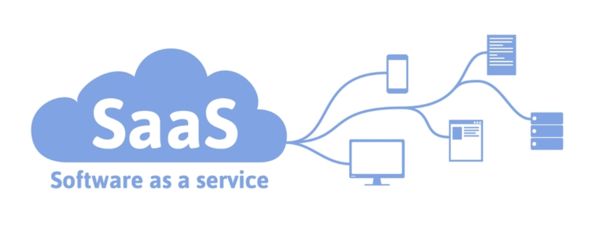
Autonomous Cars as a New Generation of Data Center Requirements
July 16, 2020
Green Data Center – What You Need to Know
July 21, 2020From automated emails to fundraising, contemporary business apps prove to be very useful for entrepreneurs as they handle business and allow the business owners to concentrate on rapid business growth and development.
Such integrated solutions work on tablets, smartphones, and desktops to handle internal communication, project management, video conferencing, and much more. The revolution brought about by SaaS has also gone a long way in helping budding business owners to quickly kick off their projects successfully.
Rather than performing internal platform coding to handle the routine, there is an extensive choice of handy choices to select from. Here’s how SaaS can make entrepreneurs more competitive and efficient.
Scale Depending on Demand
Connect from Everywhere
This again emphasizes the importance of flexibility, which is the birthright of any start-up company. Avoid giving it off by making use of programs that can be used only on office computers, thus chaining up the employees to their desktops. SaaS has the ability to connect employees who are far-flung and so it doesn’t matter where they work from, be it from home, the airport terminal in Sri Lanka, or a McDonald’s in Texas.
This has the benefit of getting work done faster.
It’s also easy to interact with clients using this model, thanks to the mobility and real-time connectivity this model offers.
Remain on the Cutting Edge

Credit: AVSystem
SaaS is continuously innovating and rationalizing operations in completely new ways. The best example of this context is Slack’s email assault. The communication platform runs on many devices and necessarily substitutes the internal email. Just imagine getting rid of your overflowing email inbox! Start-ups should act quickly to take advantage of such new applications if they want to go much ahead of corporate giants.
Develop an Integrated and Customized Workflow System in Business
There’s no doubt that enterprise application systems are very useful, though they are available as all-in-one packages, which may be annoying if all the elements fail to perform properly in your start-up environment.
For instance, if you don’t find SaaS to be a good choice for handling sensitive data, you can opt for a cloud application to handle team collaboration and an on-site server to handle your financials. Integrating several SaaS tools is the key to customize the workflow of start-ups.
There are several popular SaaS solutions that have already earned great partnership chances to improve their current platforms.
Three Common Myths about Cloud SAAS Debunked
Due to the increasing popularity that cloud services have been gaining in the recent past with the advanced technological developments, there are many queries revolving around how these services work, how lengthy and complicated the process of deployment is, who manages the data, what security is offered to protect user privacy, can the service be scaled easily, and so on. Some of the common myths associated with the above cloud service queries are debunked in the article; read on to explore more.
Myth 1
The supposed intricacy of working around legacy devices and including workloads makes cloud Software as a Service (SaaS) solutions to be burdensome during the integration process.
Fact
Some cloud SaaS providers have a fair amount of experience in streamlining and accelerating the process of integration with legacy devices. The solution here is to screen properly and carefully review provider experience in addition to tracking records before stepping into any type of relationship.
Few cloud SaaS solutions don’t need configuration with the existing legacy systems, though they rather work as individual platforms without the need for integration. Under normal conditions, a majority of these solutions don’t require over 48 hours for configuring and deploying. In reality, few solutions can be deployed within a few hours based on provider availability, IT resources, and network infrastructure.

Credit: CommBox
The key here is to be in a prepared state. Before deploying a solution, sketch out a plan by including tactics and strategies to accomplish greater value by addressing the objectives and anticipated ROI, network infrastructure, IT governance resource allotment, monitoring abilities, outages and problems, and vital metrics to check.
Myth 2
If there’s a lack of concrete factoring and regulation in the wake of data violations, cloud SaaS solutions are naturally not secure and pose a privacy risk.
Fact
The fact that data breaches are caused because of the physical burglary of on-site systems and data cannot be denied. Actually, hackers who gain entry into servers in the enterprise data centers are four times more likely to be affected by a malware attack when compared to a cloud hosting vendor.
Before deploying cloud SaaS CMS, companies should perform a comprehensive review of the chosen provider’s risk management policies and make sure that the solution incorporates auditing. In essence, work with a vendor that understands the regulatory needs of your business landscape and are clear about their data protection and security policies.
Myth 3
The applicability of cloud SaaS CMS solutions starts and finishes as a solution for disaster recovery.
Fact
Though most businesses understand the significance of implementing off-site data storage so that the recovery can be quick during disasters, the benefits of cloud SaaS are much more than disaster recovery. These solutions are widely regarded to be unbelievably flexible and provide a safer environment – statistics show that cloud vendors are four times less likely to experience malware attacks, and cyber threats when compared to enterprise data centers.
With the deployment of a cloud SaaS solution, companies can suddenly benefit from a decrease in IT resources, which are usually related to a legacy implementation model. They are proved to be more cost-efficient, moving a majority of information security assets and scalable infrastructure to vendors, thus benefiting companies from enhanced efficiencies and scale economies.
Put Plans into Action
With several cloud services offered for small businesses, avoid leaping over to the next SaaS solution. Assess the needs of your business and work with an efficient IT provider that can offer the ideal SaaS solutions. The best part of SaaS programs is that they usually charge on a monthly basis, which is why it’s not harmful to try your hand at it with the choice to back out as and when needed. In today’s volatile start-up scenario, flexibility is your best cover. Supported by powerful SaaS solutions, your business will be ready to strike the right chord.
Cloud SaaS solutions are turning out to be a fundamental need for companies, though they need to understand the difference between SaaS and cloud. Their function and role often take away the burden of deploying secure servers and systems to the vendor who has the liability of constantly monitoring security threats in the network and offers compliance reviews and comprehensive audits. The persistent misconceptions about cloud SaaS solutions become an obstruction to its extensive adoption. So, research thoroughly and break these barriers by understanding the facts, and stay clear of these common myths.
Main Photo Credit: Quest Oracle Community

